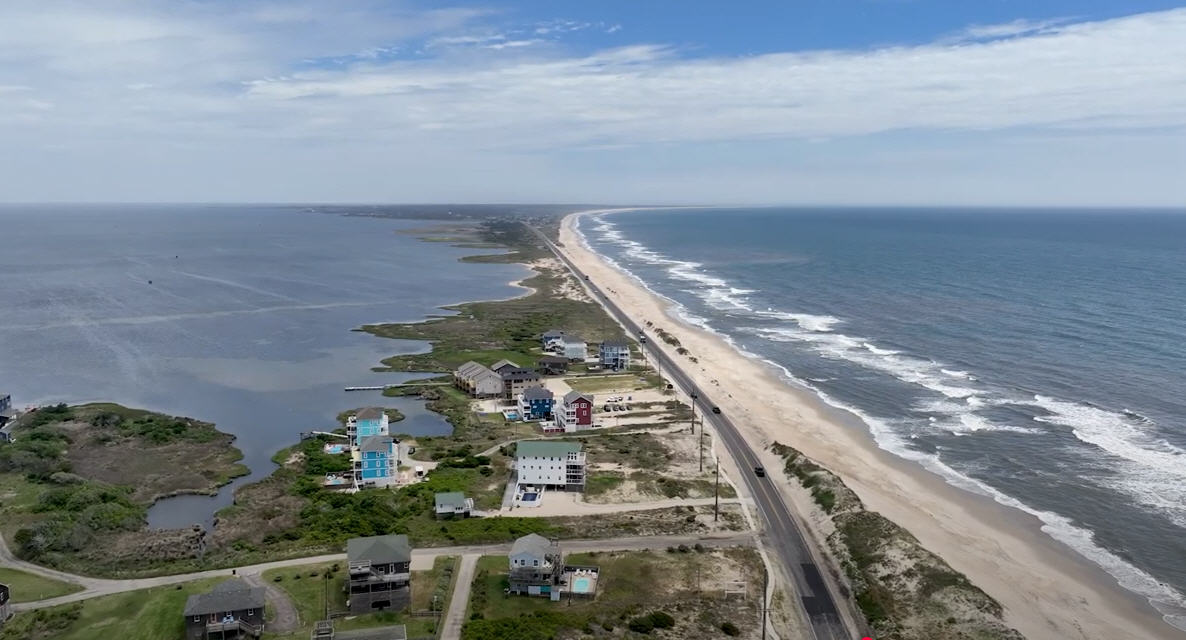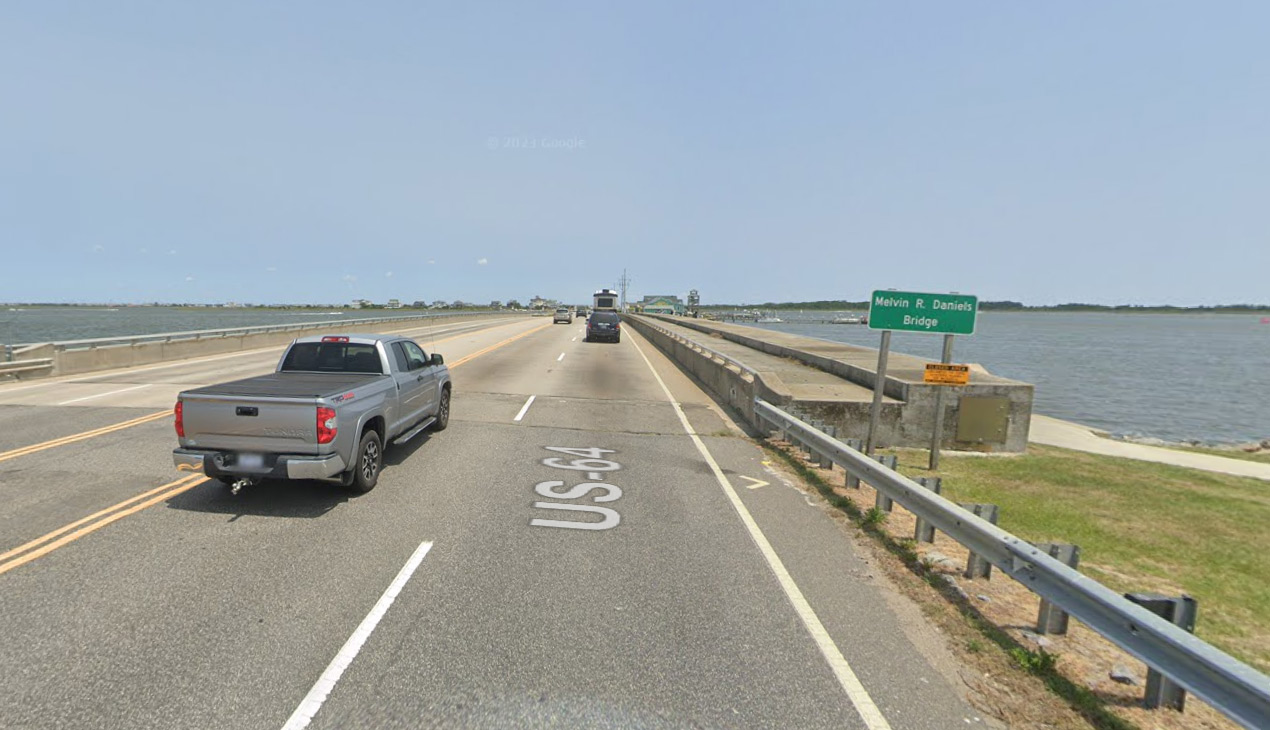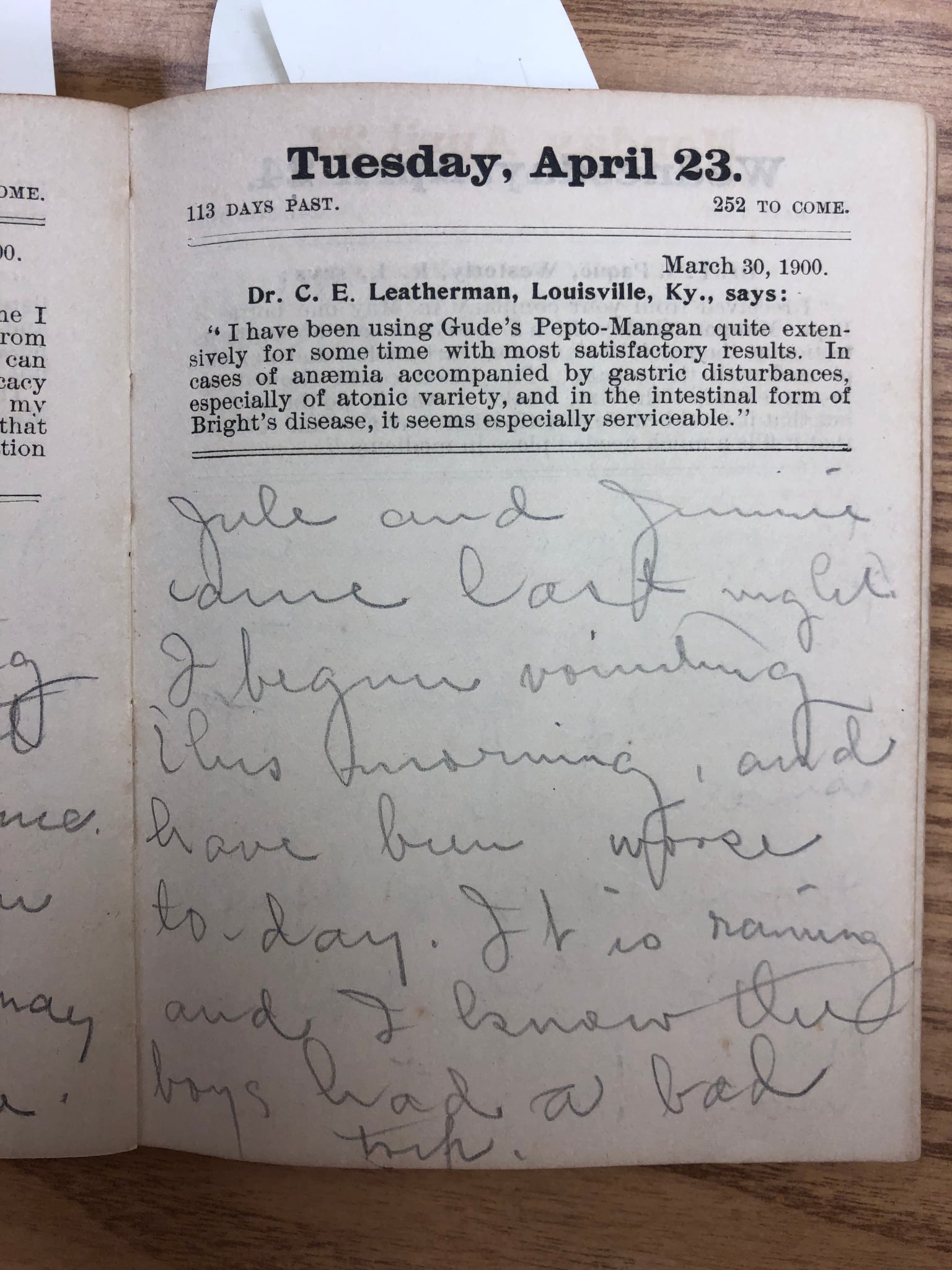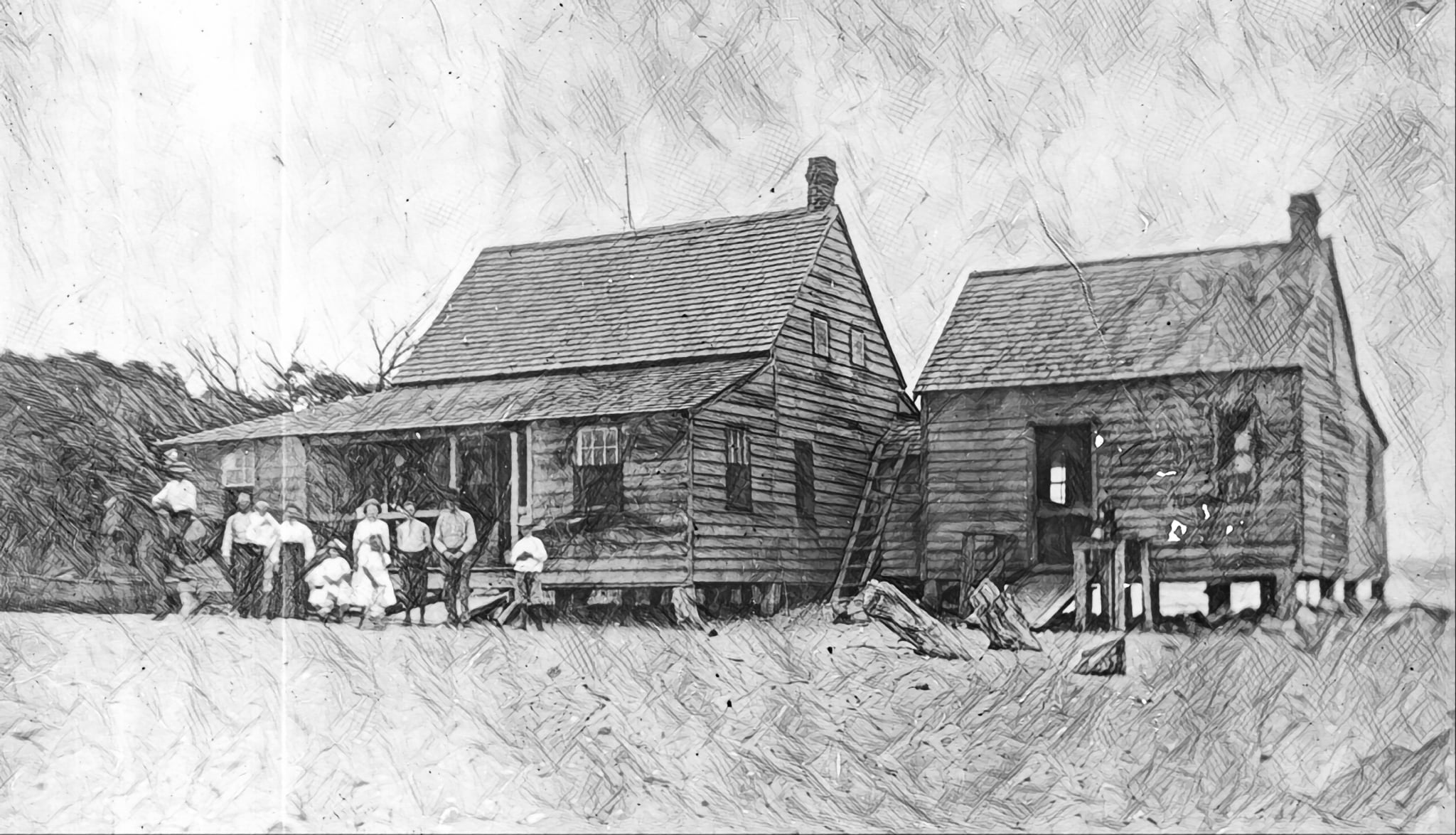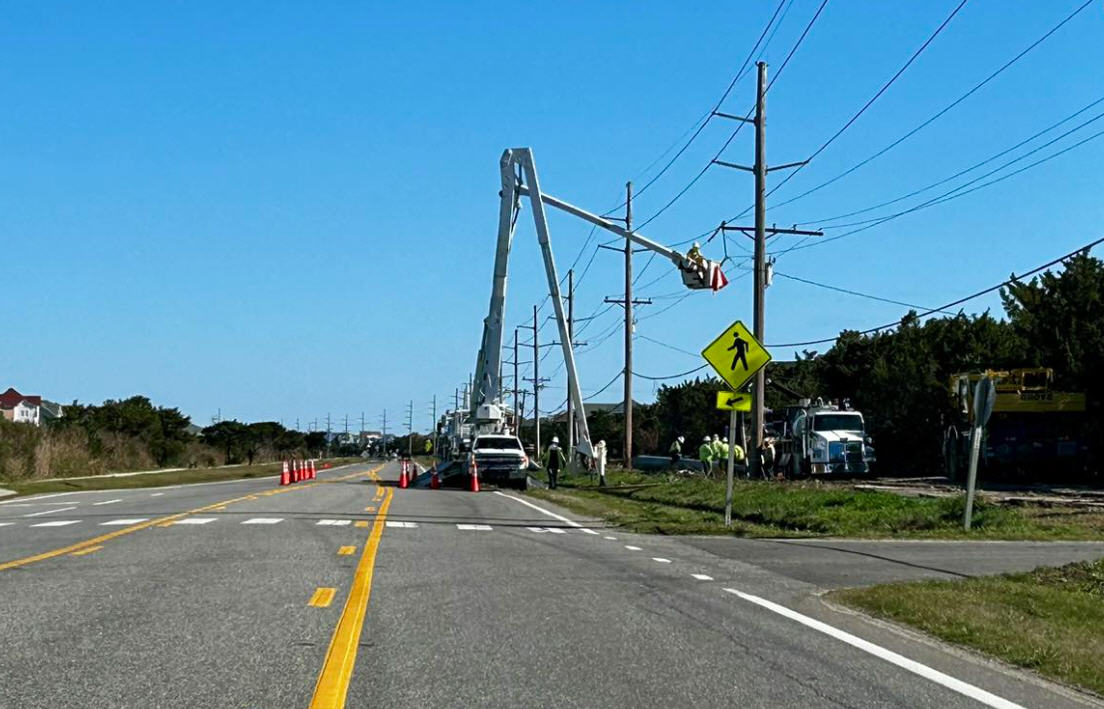Shipwreck museum building almost finished, new artifacts coming

After 12 years of spasmodic progress and fiscal near-death experiences, the Graveyard of the Atlantic Museum in Hatteras village might actually be completed before summer.
That is, construction of the building, barring another setback, will finally be done. Exhibits will still take another four years or so to complete.
“The museum is basically complete with a few tweaks here and there,” said architect John Parker, with Wilmington firm John B. Parker Architecture Inc.
“I think the community should be applauded.”
Contractor A.R. Chesson
Construction Co. of Edenton will begin work on the two-month project in the storage area at the rear of the gallery on May 1, he said. Another contractor, Elizabeth City -based McKenzie Construction Corp. had earlier completed the 5,162-square foot exhibit gallery.
Despite most islanders’ perception of the project as tortoise paced, Parker said it is unusual for museums the scale and breadth of the Hatteras museum to get beyond the sketchbook.
“It’s a very difficult process,” he said. “To have a 20,000-square-foot building erected from scratch with this kind of significance —-it’s certainly a testament to everybody.”
The museum interprets the dramatic 400-year maritime history of the Outer Banks, where 2,000 vessels are believed to have been lost to pirates, storms and war.
Joseph Schwarzer, the museum’s executive director, said that total cost for construction of the building is about $6 to $7 million. The museum, he said, still needs to raise an additional $2 million or so to complete the exhibits.
Schwarzer said that the inventory and digital photographs of the museum’s holdings will be provided to the exhibits contractor by July.
New artifacts will also be added to the list, he said, including hundreds recently located by the National Park Service in their Florida archaeological storage facility. The items —old coins and bottles, lighthouse service artifacts, and elements from shipwrecks — were gathered from islanders during door-to-door visits by the Park Service in the 1950s.
More material from the wrecks of the Monitor, the Huron, and U-boats have also been promised for the collection, Schwarzer said.
Temporary exhibits on pirates, the Monitor, and the Scenic Byways that were installed last year will remain on display for the summer, he said. A Civil War exhibit interpreting Fort Clark and Fort Hatteras will be erected by August, in time for the week-long “Flags Over Hatteras” event commemorating the islands’ role in the war during the 150th anniversary of its beginning.
Conservators, meanwhile, are still studying the Corolla shipwreck that was brought to the museum last year, he said. The wreck can be seen by the public at the concrete pad outside the museum. It cannot be brought inside until necessary conservation measures are available to treat the wood.
Schwarzer said that the vessel was 90 to 100 feet long, with a 22- to 24-foot beam. It was probably built between 1610 and 1640 from European white oak, which most likely means it is English, French, or Dutch.
“Frankly, all of us are kind of scratching our heads thinking ‘What on Earth was a cargo ship doing here?’” he said.
“We may never know.”
Schwarzer, also the director of North Carolina Maritime Museums, said that the three coastal facilities are now functioning more as a unit — a change evident on the Hatteras museum’s website.
Visitation is up. Last year there were 62,000 visitors counted in Hatteras, 240,000 in Beaufort, and 35,000 in Southport. So far, he said, he has heard of no draconian cuts in state funds for the maritime museums. Two full-time and one part-time staff members, as well as about 30 volunteers, work in Hatteras.
First proposed by members of the Hatteras community in 1986, not long after the Civil War ironclad Monitor, sunk in 1862, was found 16 miles off their coast, the Graveyard of the Atlantic Museum originally was targeted to open in the summer of 1997. But that was before the design doubled in size and estimated costs ballooned from $1.7 million to $4.5 million.
Ground was broken in 1999, and the partially-completed building opened for visitors in 2003, quickly becoming a popular free attraction. After operating as a private/public partnership with the National Park Service, owner of the 7-acre site, and the National Oceanic and Atmospheric Administration, the museum was transferred to the state in 2007 and co-joined with the two existing maritime museums.
At the same time, the state funded $408,700 toward design work for the Hatteras museum. The project has also received $145,000 in federal funds to complete construction, and $552,350 from the National Monitor Marine Sanctuary Foundation for design work. More than $35,000 has also been donated by the museum’s Friends group.
FOR MORE INFORMATION
The Graveyard of The Atlantic Museum is located near the ferry docks in Hatteras village. It is open Monday through Saturday from 10 a.m. until 4 p.m. Admission is free, but donations are appreciated. The museum’s website is http://www.graveyardoftheatlantic.com/
Subject
Name
(required, will not be published)
(required, will not be published)
City :
State :
Your Comments:
May be posted on the Letters to the Editor page at the discretion of the editor.
May be posted on the Letters to the Editor page at the discretion of the editor.
May be posted on the Letters to the Editor page at the discretion of the editor.
May be posted on the Letters to the Editor page at the discretion of the editor.








